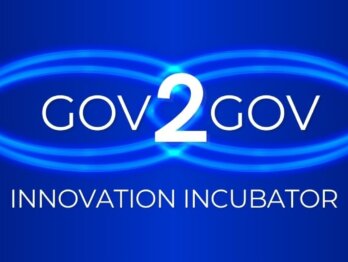Orientation Failure? Why Directionality Matters in Innovation Policy and Implementation

This blog is part of a series introducing the OECD Mission Action Lab (MAL), an initiative supporting countries to turn mission-oriented innovation into action. Find out more about the OECD Mission Action Lab or contact us at [email protected].
The Unevenly Distributed Future
Picture two mules and a wooden wagon right next to a space rocket. Now picture a world in which the richest 1% have more than twice as much wealth as 6.9 billion people, out of the total 7.9 billion people on this earth. The latter describes our world today; the former is a staged metaphor, depicting the inequalities in the United States of America in the year 1969.
The rocket is the Saturn V, which famously launched Apollo 11 and with it, the first man to ever walk on the moon. The mules and wagon were brought by the more than 500 civil rights activists, mostly African American protesters, to a protest at the gates of the Kennedy Space Center in Florida days before the launch.
In 1961, President John F. Kennedy said, “I believe that this nation should commit itself to achieving the goal, before this decade is out, of landing a man on the moon and returning him safely to earth.” Eight years later, on the 20th July 1969 NASA succeeded.
“I think it’s misplaced priorities” said Ralph Abernathy, spokesperson of the civil rights protesters. He argued that “a great nation ought to be able to take care of those who are less fortunate as well as undertake space exploration.”
In the essay “The Moon and the Ghetto” from 1977, Richard Nelson brought renewed attention to the question of directionality of innovation. He asked why societies that are wealthy and technologically advanced are not able to deal effectively with social problems such as poverty or inequities in education. Nelson believed that politics are only a small part of the problem. The main challenge, according to him, was further advancing scientific and technological breakthroughs.
Since the late seventies, humanity has laid claim to many more significant technological and scientific achievements. However, challenges such as poverty, social inequalities and of course environmental degradation persist. This begs the question: is the main problem a lack of directionality?
The COVID-19 pandemic sparked renewed interest in mission-driven innovation in industrial and socio-economic policy (see below for a framing of missions and mission-oriented innovation). The focus is a continuation of a “normative turn” in national and supranational science, technology and innovation (STI) policies over the last 15 years.
The directionality of STI policies shifted from pursuing predominantly growth and competitiveness-related objectives to addressing societal challenges. It brings together elements of innovation policy – focused on economic growth – and transition policy, which seeks beneficial change for society at large. This is important as we are seeing increasingly more evidence on the negative effects of innovation in countries across the globe, from exacerbated inequalities between places to greater inequalities between income groups.
Missions in International Development
The United Nations (UN) Sustainable Development Goals (SDGs), the Glasgow Climate Pact and Montreal Protocol are manifestations of political will and commitment and resemble a moonshot – or better “earthshot” – as Kennedy’s vision did in the 1960s. They require unprecedented commitment, collaboration and investment in a world riddled with fragmentation, short-sightedness, increasing polarisation and opposing views to what constitutes prosperity and progress.
Advancing sustainable development is complex, hard and progress is never a given. Mission-oriented innovation certainly isn’t a silver bullet to achieving the SDGs or advancing required transformations to tackle the climate crisis. However, potential exists in applying mission-oriented innovation approaches to international development.
To better understand the potential and identify factors that positively support a mission-approach, we are working with mission-partners in low and middle-income countries.
Together, we are exploring which coordination and learning mechanisms are conducive for the public, private and civil society entities to collaborate? What funding and financing modalities can provide sustained support, and facilitate innovation and open-ended exploration? In what contexts can mission-oriented innovation approaches add value to the toolbox of policy-makers and development partners? At what stage of maturity should innovation ecosystems in partner countries be to diagnose “mission-readiness”?
Introducing: the OECD Mission Action Lab
The OECD’s newly established Mission Action Lab (MAL) works with partners implementing mission-oriented innovation policies in order to address these evidence gaps. The Lab is a collaboration between the OECD Science, Technology and Innovation Directorate (STI), the Observatory of Public Sector Innovation (OPSI) and our team, the OECD Innovation for Development Facility at the Development Co-operation Directorate.
Over the course of 2022, the Lab will conduct action-oriented research to better advise governments and organisations in defining, establishing and governing large-scale missions. We will develop and release in-depth knowledge and practical guidance to address science and technology related concerns, as well as broader policymaking, financing and governance issues.
In addition, we see huge learning potential across high, middle and low-income countries. MAL will therefore also function as learning and partnerships facilitator between entities and individuals who work on mission-implementation across countries and continents.
Over the past years, the OECD Observatory of Public Sector Innovation (OPSI) has taken a deep-dive into mission-oriented innovation, convening practitioners, developing guidance and producing evidence on what works and why. The Mission Action Lab draws on the findings of OPSI and the STI Directorate, including emerging insights on innovation portfolio approaches to orchestrate the dynamic management of innovations and interventions in pursuit of a mission.
The Mission Pioneers
There are a number of interesting mission-oriented cases in the context of development. The OECD Mission Action Lab has established partnerships to learn about implementation, coordination, monitoring and sustainability mechanisms. The Lab will develop guidance for governments interested in implementing mission-oriented innovation efforts, based on the best practices and lessons learned from our research partners.
- These partners include initiatives, such as the Water Challenge in India – part of the Government’s Jal Jeevan programme – whose mission is to bring potable water to all rural households by 2024. With nearly half of all rural households already connected, the Government of India has made significant progress in achieving its mission. Organisations such as The/Nudge are accelerating the mission through a prize-based challenge that pursues innovations in water filtration and behaviour change. These types of challenges are a common model that harness creativity and innovation around to catalyse change.
- The recently announced SDG Challenge is another a research partner of MAL. A collaboration between Irish Aid and the Science Foundation Ireland, the SDG Challenge supports diverse, cross-disciplinary initiatives to develop transformative and sustainable solutions for the attainment of SDG 3 (good health and wellbeing) in countries such as South Africa, Ethiopia, Malawi, Uganda, Vietnam and Tanzania.
- A third partner of MAL is Family Planning 2030 (FP2030), a global partnership composed of governments, civil society, multilateral organisations, donors, private sector organisations and research communities to empower women and girls by investing in rights-based, voluntary family planning. So far, 14 countries and 31 organizations have joined FP2030 in their effort.
At MAL, we are particularly interested in how mission-oriented innovation can advance gender equality. Innovation for gender equality and women’s empowerment is paramount to help advance progress towards the SDGs and to combat conservative rollbacks. MAL will therefore develop knowledge on how to best shape, implement, monitor and evaluate different kinds of missions. For example, some missions are the result of foresight, working to better position us now for potential future challenges; others are the result of development partners battling against a wicked problem, and thus utilising innovation as a strategy. Similarly, some missions are led by national governments, while others are led by a coalition of partners composed of multilateral, bilateral and philantrophic organisations and where national or sub-national governments play more of a supporting, than a leading, role.
If the 1969 mission to land man on the moon has taught us one thing, it’s that the impossible is possible – as long as we coordinate, set clear goals and rally behind a mission. Through MAL, we will continue to support governments and our future generations to make big dreams into realities, to turn the “new” into the “normal” and to deliver on the global mission of a better world for all.
If you are working on a mission-oriented initiative and would like to join the OECD Mission Action Lab, reach out to us at [email protected]
What are Missions and Mission-oriented Innovation?
Missions are initiatives that address societal challenges that are cross-sectoral, ambitious, time-bound and measurable and require sustained political and financial support from partners. In the development sector, virtually all efforts and investments in this space are coined as “mission-oriented” because they work towards the SDGs.
In addition, mission-oriented innovation requires a mix of well-established policy implementation interventions and diverse innovations to advance progress against the overarching mission.
Read more about mission-oriented innovation in the OECD policy paper on the design and implementation of mission-oriented innovation policies.
By: Benjamin Kumpf, Head of Innovation for Development Facility at the OECD, and Mariam Tabatadze, Consultant at the OECD.












